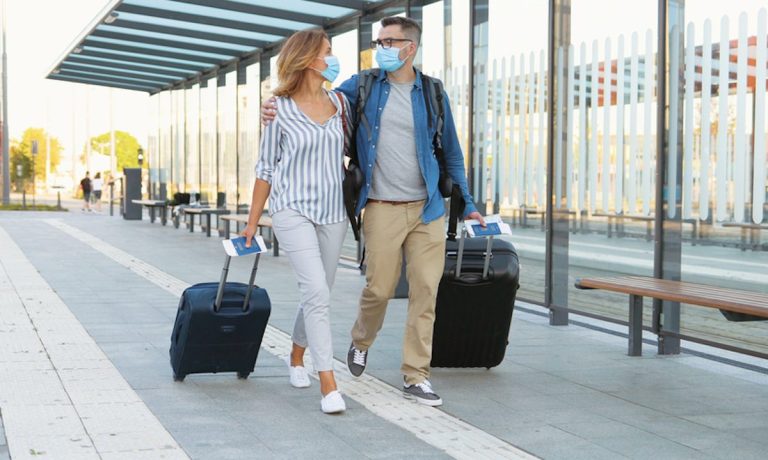
With extra cash in their bank accounts and an itch to get away, many consumers spent their first summer with a COVID-19 vaccination away from home, spending their money on travel accessories and outdoor experiences rather than another take-out meal or trip to the mall.
Jen Moyse, senior director of product for online travel planner TripIt, said that domestic tourism has “started to get back to normal,” but is still below 2019 levels. “There was definitely a backlog of summer planning that was not met and started to tick back in over this past summer,” she noted.
Even approaching Labor Day, travel demand is still up despite renewed concerns over COVID-19; domestic flights over the long weekend are up 209% from last year’s levels, yet still only about half (53%) what they were in 2019.
“We’re seeing that people are starting to think about ‘the usual concerns’ that they’ve had in the past around disruption,” such as long lines, prices and airport and travel logistics, Moyse said. “So, it’s less focused on COVID specifically and [more on] other concerns around it.”
According to a survey conducted by TripIt, 82% of Americans traveled this summer, with 73% opting for a road trip with a personal car and 52% boarding a domestic flight. Vacations were the most popular reason to travel (87% of Americans), with business trips at 52%, and visits with family or friends rounding out the top three at 42%.
Leading up to Memorial Day, the Transportation Security Administration (TSA) hired more personnel, but warned that travelers should prepare for long lines at airports — a forecast that held true for much of the summer, especially with staffing shortages and sweeping flight cancellations such as Spirit Air’s stranding passengers at some airports.
See also: Travel Numbers Surge, Leading to Long Airport Wait Times
Getting Away for the Winter
With each holiday over the past several months, Moyse said that “travel seems to be picking up, the comfort level seems to be ticking up” — a trend that points to a potential boon for Thanksgiving and the winter holidays. Twenty-two percent of travelers say they’re intending to travel for Thanksgiving, according to TripIt, and 31% are already thinking about travel over the winter holidays.
Moyse noted, too, that a spike in holiday travel interest could be looming. Travelers seem to be making reservations a bit closer to their trip date, she said, with many people looking to get away over Labor Day not booking until July.
“We suspect that’s due to the environment changing so rapidly,” Moyse said. “People are keeping an eye on the COVID infection rates, they’re keeping an eye on the requirements, different restrictions in the places they want to visit.”
In a conversation with PYMNTS last month, Hopper Co-founder and CEO Fred Lalonde said the pandemic has proven that people want to travel — “and they’ll do it as soon as they’re able to.”
Read more: With Domestic Travel Booming, Hopper Bets Its New Services Will Take off, Too
He referenced a coming “supercycle” that has been forecast for domestic air travel in the U.S., Europe and China, noting that people are anxious to leave their homes after spending the better part of 18 months there.
“As people are able to go back to places like Florida or Louisiana when it becomes safe again, you’re going to see people traveling,” Lalonde predicted.
Pushing Back Departure Times
That isn’t to say, though, that everyone is ready to hit the road and take to the skies just yet. One in five Americans says they still aren’t ready to take a domestic flight, though most say they’ll be ready to fly by July 2022. In December, Moyse said, 75% of travelers told TripIt they would be comfortable traveling at this point.
Only 13% of travelers said they had already taken an international flight in the last three months, with just over half of those surveyed saying they’ll be comfortable traveling across the U.S. border by the end of the year.
Moyse added that the nature of travel is also changing as consumers are forced to be more patient and flexible about travel plans. Consumers must be prepared for canceled flights, rental car shortages and other delays more often than they were prior to the pandemic.
“Some of the costs aren’t just money,” Moyse said. “They’re also costs in your own flexibility and mindset, so some of our travelers have already shown us that the road trip is where it’s at right now.”